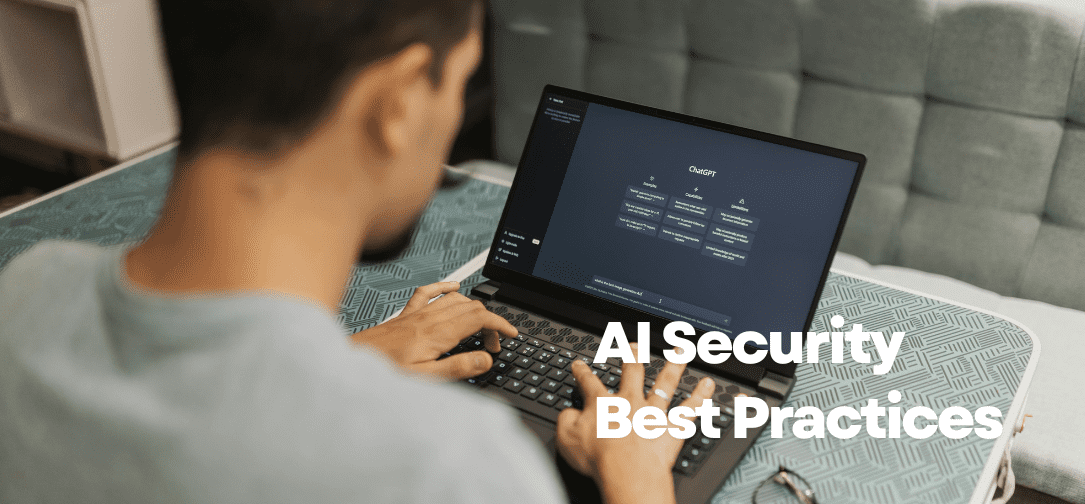As a technology leader, you face growing pressure to secure artificial intelligence systems that now drive daily operations and decision-making. The rapid adoption of AI introduces new risks that traditional cybersecurity measures can’t fully address. You need clear, practical steps to protect your organization’s AI assets without slowing innovation.
This article helps you strengthen AI security by focusing on proven practices that safeguard data, models, and infrastructure. You’ll explore how to manage access, monitor system behavior, and build a culture that treats AI security as a shared responsibility across teams. Each section provides guidance you can apply directly to your organization’s AI environment.
1) Implement robust access controls to restrict AI system usage
You need to limit who can access your AI systems and what actions they can perform. Strong access controls help prevent unauthorized users from viewing, changing, or misusing data and models. This reduces the risk of data leaks and model manipulation.
Use authentication and authorization tools that verify user identity and define clear permission levels. Role-based access control ensures that only approved users can modify or deploy AI models.
Monitor access logs to detect unusual activity, such as repeated login attempts or unexpected data downloads. Regularly review and update user permissions as roles or projects change.
Apply the same principles to third-party integrations and APIs. Restrict external access to only what is necessary for system performance. By maintaining strict access boundaries, you protect sensitive information and maintain control over how your AI systems are used.
2) Conduct regular AI model vulnerability assessments
You should run vulnerability assessments on your AI models to detect weaknesses before attackers do. These checks help you find issues like data leakage, model poisoning, or prompt injection that can compromise your system’s integrity.
Start by mapping where your models interact with sensitive data and external inputs. Review model training data, access controls, and deployment environments to identify exposure points. Regular testing helps track changes in your security posture over time.
Use specialized AI security tools to automate scanning and detect threats specific to large language and generative AI models. These tools can simulate attacks, monitor model behavior, and flag anomalies that traditional cybersecurity tools might miss.
Document findings and prioritize fixes based on risk. Sharing results with your engineering and compliance teams ensures that vulnerabilities are addressed quickly and consistently.
3) Encrypt sensitive data used in AI training and inference
You should encrypt all sensitive data used in AI training and inference to prevent unauthorized access or tampering. Encryption protects data both when stored and when transmitted between systems. This helps reduce the risk of data exposure or theft, especially when working with regulated or proprietary information.
Use strong, modern encryption standards such as AES-256 for data at rest and TLS for data in transit. These methods ensure that even if an attacker gains access to your systems, the data remains unreadable without the proper keys.
You should also manage encryption keys securely. Store them separately from the data, rotate them regularly, and restrict access to authorized personnel only. Implementing hardware security modules or trusted key management services can further strengthen protection.
Encrypting model parameters and outputs can also help prevent model inversion and data leakage attacks. This ensures that sensitive training data cannot be reconstructed or inferred from model behavior.
4) Establish comprehensive AI governance policies
You need clear AI governance policies to manage how your organization develops, deploys, and monitors AI systems. These policies define accountability, ensure compliance with regulations, and reduce the risk of misuse or bias.
Start by setting rules for data usage, model training, and system transparency. Document who approves AI models, how decisions are reviewed, and what controls prevent unauthorized changes or shadow AI.
Use both automated tools and manual checks to enforce these policies. Automated monitoring helps detect policy violations early, while human oversight ensures ethical and contextual judgment.
Align your governance approach with recognized frameworks and local legal requirements. This alignment helps you meet audit expectations, protect customer trust, and maintain consistent practices across all AI projects.
Review and update your governance policies regularly. As AI regulations and technologies evolve, your policies must adapt to stay effective and relevant.
5) Monitor AI system behavior for anomalous activities
You should continuously monitor your AI systems to detect unusual actions, data patterns, or performance changes. Regular monitoring helps you identify misuse, system drift, or security threats before they cause harm.
Use automated tools to track model inputs, outputs, and access logs. These tools can alert you when an AI behaves outside expected parameters or when unauthorized users attempt to interact with it.
Include human oversight in your monitoring process. Human review ensures that alerts are interpreted correctly and that responses are appropriate to the situation.
Apply techniques like anomaly detection and meta-learning models to improve your system’s ability to recognize irregular behavior. This helps your AI adapt to new threats and maintain reliability over time.
Document incidents and responses to build a history of system performance. This record supports audits, improves future monitoring, and strengthens your overall AI security posture.
6) Train staff on AI-specific cybersecurity risks
You should train your staff to understand how AI systems create new security challenges. Traditional cybersecurity training may not cover threats like data poisoning, model theft, or prompt injection. Employees need to know how these risks differ from standard IT vulnerabilities.
Include AI-focused examples in your training sessions. Show how compromised training data or manipulated inputs can lead to incorrect or biased model outputs. Use clear, real-world scenarios to help staff recognize warning signs early.
Encourage responsible data handling. Teach employees to verify the source and integrity of data used for model training. Explain why using trusted, traceable data reduces the chance of hidden manipulation.
Make AI security part of your regular cybersecurity program. Provide refresher courses as tools and threats evolve. When your team understands AI-specific risks, they can better protect sensitive data and maintain system reliability.
7) Perform continuous compliance audits for AI deployments
You should run regular compliance audits to ensure your AI systems meet security, privacy, and regulatory standards. These audits help you detect gaps early and confirm that controls remain effective as your models and data evolve.
Use automated tools to monitor compliance in real time. Integrating audits into your CI/CD pipelines allows you to track changes, flag risks, and maintain consistent documentation without slowing development.
Review data handling, access controls, and model behavior at each stage of the AI lifecycle. Continuous auditing supports transparency and helps you prove adherence to frameworks such as the EU AI Act or NIST AI Risk Management Framework.
Keep audit findings actionable. Assign clear responsibilities for remediation, update policies when regulations change, and maintain traceable records to demonstrate accountability during external reviews.
Understanding the AI Security Landscape
You face growing risks as AI systems become central to business operations. Protecting these systems requires understanding the threats that target data, models, and infrastructure, as well as meeting evolving legal and compliance standards.
Common Threats Facing AI Systems
AI systems face both traditional and unique security threats. Attackers may exploit data poisoning, where they insert false or biased data into training sets. This can cause your model to produce inaccurate or harmful results.
Model inversion and membership inference attacks target sensitive information. In these cases, adversaries may reconstruct or infer private data used in training. You must secure model APIs and limit data exposure to reduce these risks.
Unauthorized access to model weights or algorithms can lead to intellectual property theft. Using access controls, encryption, and continuous monitoring helps protect proprietary assets.
Common AI Threats Overview:
| Threat Type | Description | Mitigation Strategy |
| Data Poisoning | Tampering with training data | Validate and monitor data sources |
| Model Inversion | Extracting private data from models | Apply differential privacy |
| Adversarial Inputs | Manipulating inputs to mislead models | Test models with adversarial examples |
| Model Theft | Copying or replicating model behavior | Restrict API access and watermark models |
Regulatory and Compliance Considerations
You must align AI security with privacy and data protection laws. Regulations like the EU AI Act, GDPR, and NIST AI Risk Management Framework set standards for transparency, accountability, and data handling.
Compliance requires documenting how your AI models use and store data. You should maintain audit trails, perform impact assessments, and ensure human oversight in decision-making.
Many organizations adopt “secure by design” principles, embedding security controls throughout the AI lifecycle. This includes encryption of training data, strong identity management, and third-party risk assessments.
Regular reviews help you adapt to new rules and maintain trust with regulators, customers, and partners.
Building a Culture of AI Security
Creating a culture of AI security depends on leadership commitment and workforce awareness. You need clear accountability at the top and consistent education across teams to ensure that security remains part of every decision, process, and product involving AI.
Executive Leadership and Accountability
You set the tone for AI security through visible leadership and defined responsibilities. When executives model secure behavior and make security goals part of business objectives, teams follow.
Establish ownership by assigning specific roles for AI risk management, compliance, and incident response. Use a security-by-design approach that integrates protection measures into AI development from the start rather than adding them later.
Regularly review performance metrics such as:
| Metric | Purpose |
| Model access logs | Detect unauthorized use |
| Data lineage reports | Track data sources and integrity |
| Security audit results | Measure adherence to policy |
Hold leaders accountable for meeting these standards. Transparent reporting and cross-department collaboration help maintain consistency and reduce blind spots across projects.
Continuous Education and Training
You strengthen AI security when every employee understands their role in protecting systems and data. Ongoing education ensures that teams recognize new risks, such as data poisoning or model manipulation, and know how to respond.
Provide role-based training that matches each team’s responsibilities. For example:
- Developers: secure coding and model validation
- Data scientists: data quality and privacy safeguards
- Operations staff: monitoring and incident response
Update training as threats evolve. Encourage peer learning through workshops and short simulations that test real-world scenarios. When security knowledge becomes part of daily work, your organization builds lasting resilience against AI-related threats.
Final Thoughts
You play a central role in protecting your organization’s AI systems. Strong security practices help you maintain trust, reduce risk, and support reliable AI outcomes.
Focus on data integrity, model protection, and secure deployment. Each stage of the AI lifecycle—from data collection to production—requires consistent monitoring and controls to prevent tampering or misuse.
Use a layered defense strategy:
- Access control to limit exposure
- Encryption to protect sensitive data
- Monitoring to detect unusual activity
- Patch management to address known vulnerabilities
Consider adopting frameworks like AI TRiSM (Trust, Risk, and Security Management) to align governance, compliance, and ethical standards. These principles help you design resilient and transparent AI systems.
| Key Area | Primary Goal |
| Data Security | Safeguard training and operational data |
| Model Security | Prevent theft or manipulation |
| Compliance | Meet regulatory and ethical standards |
By applying these best practices, you strengthen your AI’s confidentiality, integrity, and availability while enabling responsible innovation across your enterprise.



































